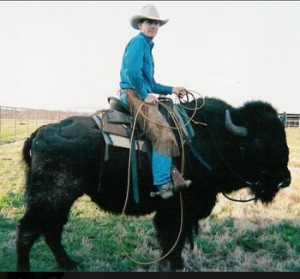You may hear them called a ‘cincha’, ‘girt’, or even ‘belly belt’, whatever the localized name, they are designed for the same purpose of holding the seat, most often called “the saddle”, in position on the back of most any of the many animals used for transportation of people or goods. Historically spoken of as “beasts of burden”, such animals vary greatly in size. While you may be familiar with the most popular being horses, mules, and ponies, there are a few folks who have trained zebras, long-horn cattle, and even the American bison for the purpose of riding with a western style saddle.
Camels and elephants top the charts for western style cinch length with “saddles” which range from simple to rather extensive structures. Just think of the weight of those frames and number of people depending on the cinches during those elephant rides!
Animals ‘less notable’ for use of a cinch range from those which may be only able to carry enough food for a weekend backpack trip, such as medium and large canines, to the alpacas and llamas used as pack animals on a regular basis by many cultures, especially in the Americas.
As you can imagine, variations of the cinch are utilized by people and animals numbering in the millions on our planet for any given day. How many of them do you think, have taken a close look and feel of the cinch they are using today? Is it a good idea to use those cheap, often damaging  cinches [“safety-belts”] as the only line of security for an often costly investment of saddle or goods being transported?
cinches [“safety-belts”] as the only line of security for an often costly investment of saddle or goods being transported?
Consider this: In 1923 a 4 inch wide stock mohair cinch [“factory-made” by-hand in volume {meaning one worker crafting specific parts and/or several complete cinches in the same day} with no length identified] provided with the saddle purchase from D.E. Walker’s Vilsalia Company was identified as $4.25 of the saddle price. Since the saddles, including such a cinch, were offered in the neighborhood of $17 to $35, we can calculate the value of the cinch secured to basic steel rings easily to range from just over 12% to 25% of the saddle price.
saddle purchase from D.E. Walker’s Vilsalia Company was identified as $4.25 of the saddle price. Since the saddles, including such a cinch, were offered in the neighborhood of $17 to $35, we can calculate the value of the cinch secured to basic steel rings easily to range from just over 12% to 25% of the saddle price.
Why does this matter? You may ask. Well, it gives you a reference point for determining what a quality cinch in mohair might reasonably command for sustainability in today’s market. Keep in mind that an upgrade of cinch hardware from the simple steel ring to a bronze ring or cast center-bar buckle styles in the early to mid 1900s could nearly double the price of any given cinch style! For instance, in the same 1923 Visalia catalog purchase of a 7 inch wide cinch on “Meduim Steel Rings” ran $5, while the ‘same’ cinch materials and design cost $9 for “Extra Fine Bronze Rings.” In today’s world these reference points and applying our own ability to calculate retail prices can give us a much more informed perspective on choosing a cinch which is more likely to be fashioned in quality of materials and craftsmanship.

Wyoming Wagon Train near the family ranch where Darin demonstrated cinch making for the first time in 1992.
Sustainable pricing is also an area where each consumer can have greater confidence in the value-added nature of the artisan. After all, since we are speaking of an original cowboy-arts tradition, wouldn’t we automatically expect the sales value to ensure funding for ongoing research and development including resource availability for comparing cinch designs, types of fibers used in cords, and other styles to ensure the most accurate and up-to-date information is available to makers and consumers?
For the present we invite you to keep this in the back of your mind as you look into the cinch equation for yourself. In subsequent postings we will take a look at other aspects of the cinch and girth in our quest to understand what each of us can do to further promote the value of cinch comfort and health as well as advancing scientific insights for use in every-day cinch applications.

